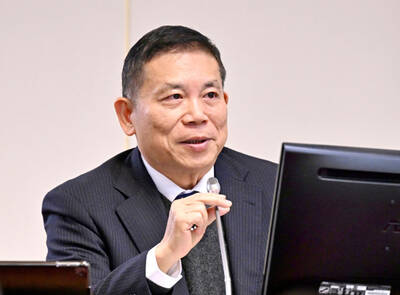The unemployment rate fell to 3.91 percent last month, its lowest level in nearly six years, on the back of an economic recovery that boosted momentum in the job market, the Directorate-General of Budget, Accounting and Statistics (DGBAS) said yesterday.
The rate of 3.91 percent last month was an improvement by 0.12 percentage points from 4.03 percent in March and by 0.16 percentage points from 4.07 percent in April last year, the agency said in its monthly report. The figure marked the lowest level since June 2008.
It was the first time the jobless rate has fallen below 4 percent since the global financial crisis in 2008, the agency said.
The seasonally adjusted unemployment rate — a more accurate indicator of the long-term employment trend — also fell, shedding 0.02 percentage points from March to 4.04 percent last month, the report said.
“During the financial crisis [in 2008], the pace of economic recovery was slow, which made the nation’s jobless rate stay above 4 percent for quite a while,” DGBAS Deputy Director Lo Yi-ling (羅怡玲) told a press conference.
However, demand in both the public and private sectors has rebounded this year, driving the number of unemployed down by 14,000 to 449,000 last month from March, she said.
Lo said she remains cautious about the unemployment situation in the near future, as a new round of college graduates will enter the job market next month, an expected influx of about 300,000 first-time jobseekers.
However, 1111 Job Bank (1111人力銀行) public relations director Daniel Lee (李大華) said the demand for staff may remain strong in the second half of the year, mainly driven by strong orders received in the electronics sector.
The DGBAS report also said that the average monthly wage in the industrial and service sectors climbed to a record-level NT$37,808 in the first three months of the year, an increase of 1.31 percent from the previous year.
The overall average monthly wage, including bonuses and compensation, rose 5.54 percent to a new high of NT$57,582 in the first quarter, compared with the same period in the previous year, the report said.
However, the increase in the average wage was still lower than the pace of the consumer price index.
After adjusting the average for inflation — which climbed 0.8 percent year-on-year in the January-to-March period — the real average wage, including bonuses and compensation, totaled NT$55,872, which was still less than the NT$56,949 recorded during the same period in 1998, the DGBAS report said.

UNCERTAINTY: Innolux activated a stringent supply chain management mechanism, as it did during the COVID-19 pandemic, to ensure optimal inventory levels for customers Flat-panel display makers AUO Corp (友達) and Innolux Corp (群創) yesterday said that about 12 to 20 percent of their display business is at risk of potential US tariffs and that they would relocate production or shipment destinations to mitigate the levies’ effects. US tariffs would have a direct impact of US$200 million on AUO’s revenue, company chairman Paul Peng (彭雙浪) told reporters on the sidelines of the Touch Taiwan trade show in Taipei yesterday. That would make up about 12 percent of the company’s overall revenue. To cope with the tariff uncertainty, AUO plans to allocate its production to manufacturing facilities in

Taiwan will prioritize the development of silicon photonics by taking advantage of its strength in the semiconductor industry to build another shield to protect the local economy, National Development Council (NDC) Minister Paul Liu (劉鏡清) said yesterday. Speaking at a meeting of the legislature’s Economics Committee, Liu said Taiwan already has the artificial intelligence (AI) industry as a shield, after the semiconductor industry, to safeguard the country, and is looking at new unique fields to build more economic shields. While Taiwan will further strengthen its existing shields, over the longer term, the country is determined to focus on such potential segments as

Chizuko Kimura has become the first female sushi chef in the world to win a Michelin star, fulfilling a promise she made to her dying husband to continue his legacy. The 54-year-old Japanese chef regained the Michelin star her late husband, Shunei Kimura, won three years ago for their Sushi Shunei restaurant in Paris. For Shunei Kimura, the star was a dream come true. However, the joy was short-lived. He died from cancer just three months later in June 2022. He was 65. The following year, the restaurant in the heart of Montmartre lost its star rating. Chizuko Kimura insisted that the new star is still down

While China’s leaders use their economic and political might to fight US President Donald Trump’s trade war “to the end,” its army of social media soldiers are embarking on a more humorous campaign online. Trump’s tariff blitz has seen Washington and Beijing impose eye-watering duties on imports from the other, fanning a standoff between the economic superpowers that has sparked global recession fears and sent markets into a tailspin. Trump says his policy is a response to years of being “ripped off” by other countries and aims to bring manufacturing to the US, forcing companies to employ US workers. However, China’s online warriors